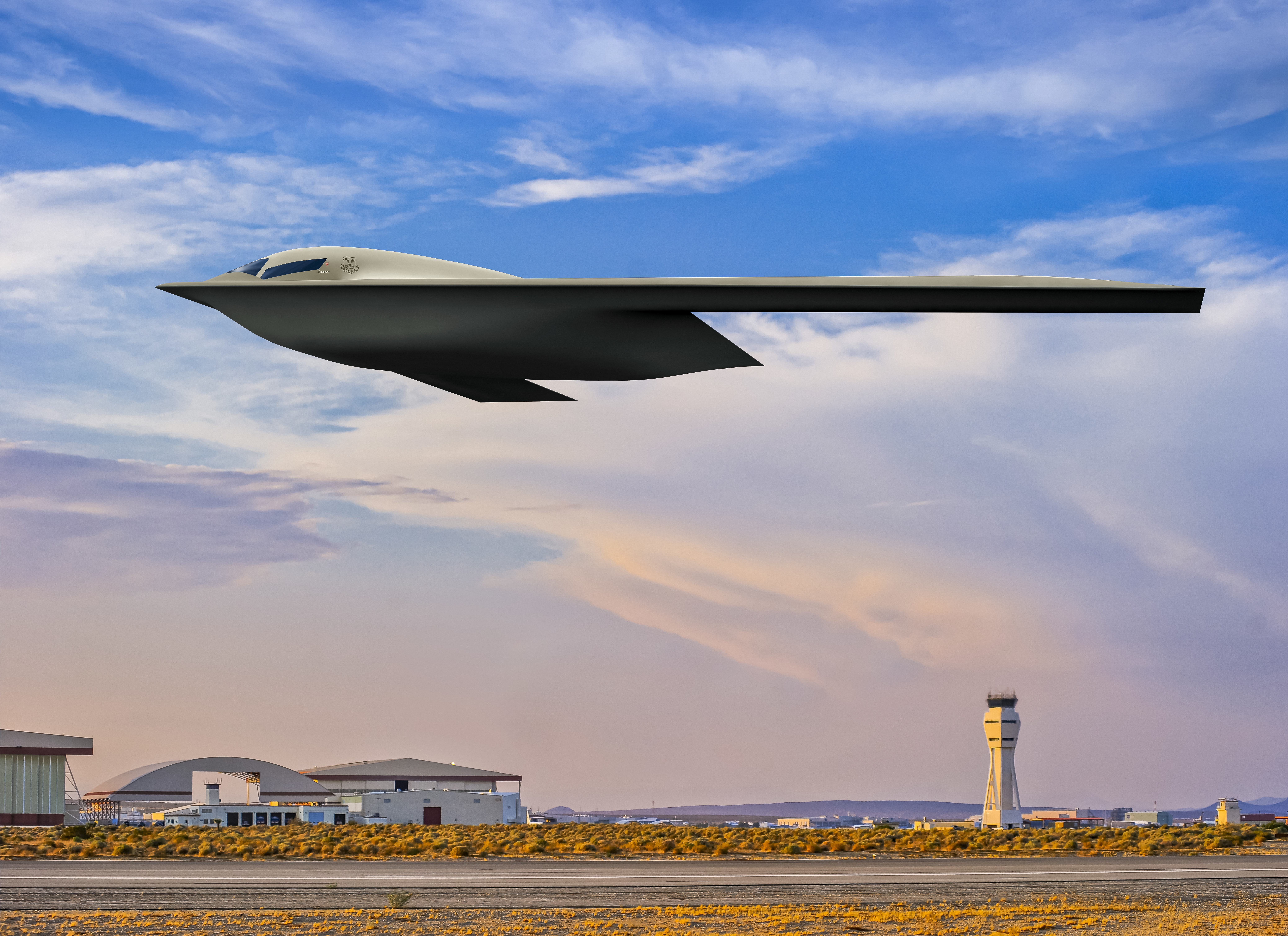The B-21 Raider continues to be a “model” program for the Air Force, with six of the new bombers currently in production and some of its software already validated through digital testing, a top general at Air Force Global Strike Command said Feb. 9.
Speaking at the 2022 Nuclear Deterrence Summit, Maj. Gen. Jason R. Armagost said the new stealth bomber will likely fly in 2022, echoing previous predictions by other Air Force officials.
“The B-21, going into the future, is going to be our penetrating, get inside the anti-access, area of denial, dual-capable aircraft,” said Armagost, the director of strategic plans, programs, and requirements at AFGSC. “There are now six of those in existence. The rollout will probably be some time this year. I’m not at liberty to give the likely date of that, but [it will be] quickly followed by first flight.”
In September 2021, Air Force Secretary Frank Kendall stated that five B-21s were in production. In the past few weeks, another started, Armagost confirmed to Air Force Magazine.
The development of the B-21 has been aided by the Air Force’s embrace of digital technologies to speed up the process, Armagost added.
“We are capitalizing on the revolution in digital—models-based systems engineering, open mission systems architecture software,” Armagost said. “As an example, the software for the fuel control system, which is a pretty complex thing, is completely done on an aircraft that hasn’t even flown yet as a test article, because of how we’re able to do models-based systems engineering. And they actually built a fuel systems model and tested the software, and the software is ready to go.”
It’s not the first time digital engineering has played a role in the modernization of the Air Force’s bomber fleet. Late last year, Rolls-Royce North America President and CEO Tom Bell said the company had digitally “built” a B-52’s wing with the company’s F130 engines installed to demonstrate its advantages and win the contract for the B-52 Commercial Engine Replacement Program.
Armagost noted that digital technologies have also been integrated into the B-21’s future sustainment.
“One of the things that I’m most excited about is the requirements for new systems that haven’t even flown … yet. The fact that there’s a modernization effort built into those already, right?” Armagost said. “So in the B-21, for example, there’s technologies that are explored that we can risk-reduce through other platforms, potentially, and integrate ahead of the aircraft even flying. And so it’s kind of an exciting way to get back to that models-based systems engineering [that] has kind of opened up some possibilities on sustainment, interacting with the environment in ways that are really useful to the future systems.”
At the moment, the development of the Ground Based Strategic Deterrent to replace the Minuteman III system “is the No. 1 program in the Air Force,” Armagost said. But the B-21 is right up there with it, he added.
Armagost’s counterpart in the Navy, Vice Admiral Johnny Wolfe, said during the panel discussion that his service is “line to line” with its nuclear modernization efforts, with new systems scheduled to hit the field just as the old ones hit the end of their service lives. Even though the Air Force isn’t quite there in its nuclear modernization plans, Armagost said the service is working to smoothly transition from one capability to the next over time.
“The transition is how we build in the flexibility within the existing capabilities to have an on-ramp that proves the viability of the oncoming system,” Armagost said. “ … Obviously, you know, when things happen or sustainment challenges arise, it can affect that, but we’re pretty comfortable right now with how we’ve planned for that, and how that on-ramp, off-ramp looks across those systems.”
The nuclear modernization effort, however, does face one potentially significant hurdle, particularly for missiles such as the GBSD and the Long Range Standoff Weapon: the production of plutonium “pits” that go in the center of nuclear warheads.
The National Nuclear Security Administration had set a goal of producing 30 pits per year by 2026 and 80 by 2030. But, “I think NNSA will readily admit they’re not going to make that requirement,” Wolfe said.
“We’re going to have to have some really tough discussions about, if we can’t get the requisite number of pits that we need for warheads in the future … at some point, we’re going to have a tough discussion about how many pits can we reuse? And if we reuse those, what does that mean to the design?” Wolfe said. Armagost added that “we have multiple paths for warheads within systems.”
